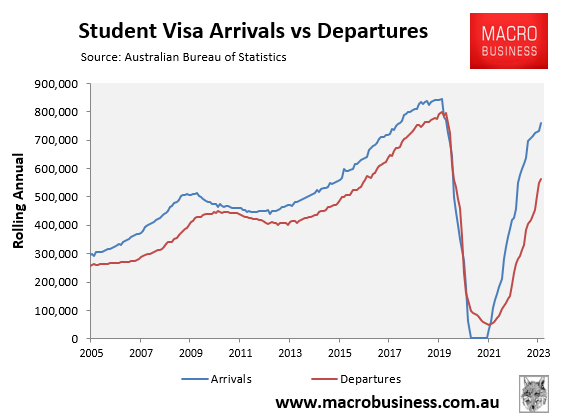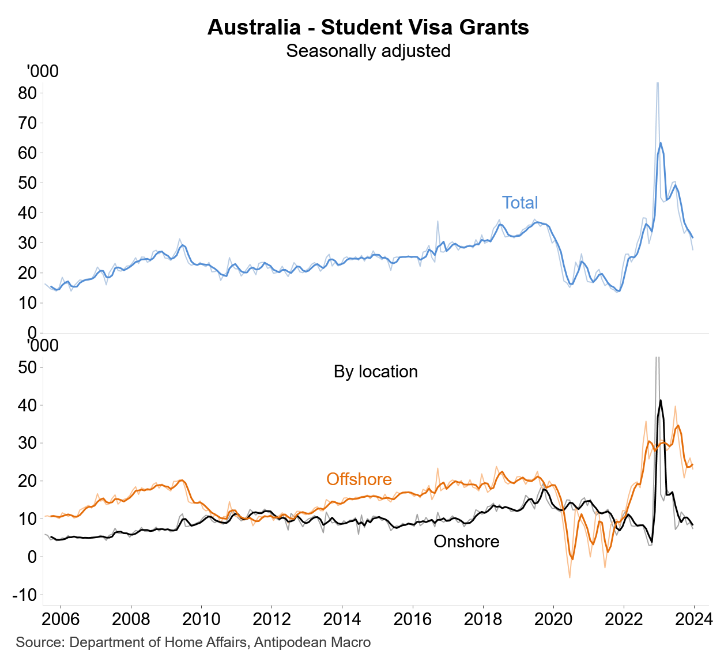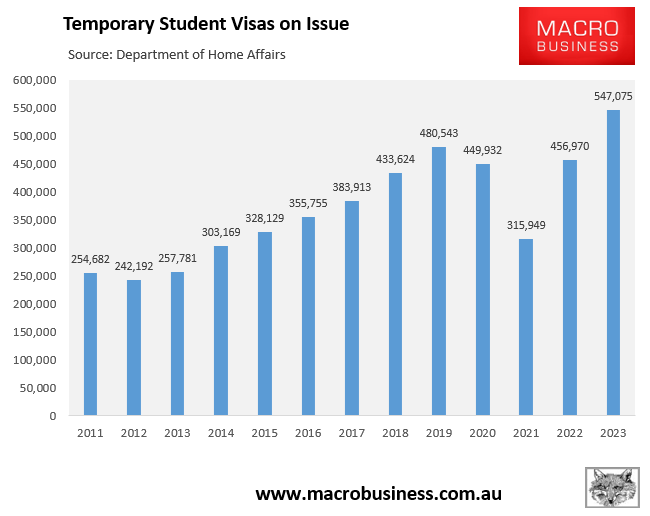The AFR’s Julie Hare reported over the weekend that “foreign students are leaving Australia in droves after visa crackdown”:
“Net migration for international students was down 55% in the latter part of 2023 as departures far outpaced arrivals in the last two months of the year”, Hare wrote.
“Australian Bureau of Statistics data shows that although 73,840 more students arrived in Australia in the six months to December compared to the same period in 2022, 180,000 more students left”.
“In the two months of November and December alone, 120,000 students left the country, compared to just 27,310 in 2022”, Hare reported.
The below chart tells the story, with student visa departures catching up with arrivals:

In turn, net student visa arrivals turned down in the latter part of 2023:

The below chart from Justin Fabo at Antipodean Macro also shows that “the flow of international students to Australia is slowing as evidenced by a decline in student visa grants”:

That said, separate Department of Home Affairs data shows that total student visas on issue were higher at the end of 2023 than any other corresponding period:

Graduate visas on issue were also higher at the end of 2023 than any prior corresponding period:

Thus, while international student numbers may have peaked, they remain at historically high levels.
That said, the visa changes are obviously having an impact given the special pleading coming from Indian student representatives.
Last week, the Association of Australian Education Representatives in India wrote to Home Affairs Minister Clare O’Neil and Education Minister Jason Clare, expressing concern that rising student visa denial rates and university responses were accidentally trapping legitimate students.
“This entire process takes eight to 12 months of advice and preparation”, the letter said.
“The students and their families are invested financially and emotionally in this journey at every stage and when they are handed a visa rejection or a cancelled eCoE [electronic certificate of enrolment] or asked to withdraw their file, the bewilderment and the horror is so acute and profound that it is hard to explain that there has been a sudden policy change and that Australia wants to bring down net migration”.
Instead of continually lowering entry standards to juice volumes, policymakers should concentrate on attracting a smaller pool of exceptional (genuine) students by raising financial barriers to entry, increasing entrance requirements (particularly for English language proficiency), and eliminating the clear link between studying, working, and permanent residency.
These reforms would improve student quality, increase export income per student, raise wages and working conditions in low-skilled jobs, and reduce enrolment levels to manageable and sustainable levels, thereby improving local students’ learning environments and relieving population pressure.
To put it another way, international education must prioritise quality above quantity. It also shouldn’t be used for backdoor immigration purposes.

